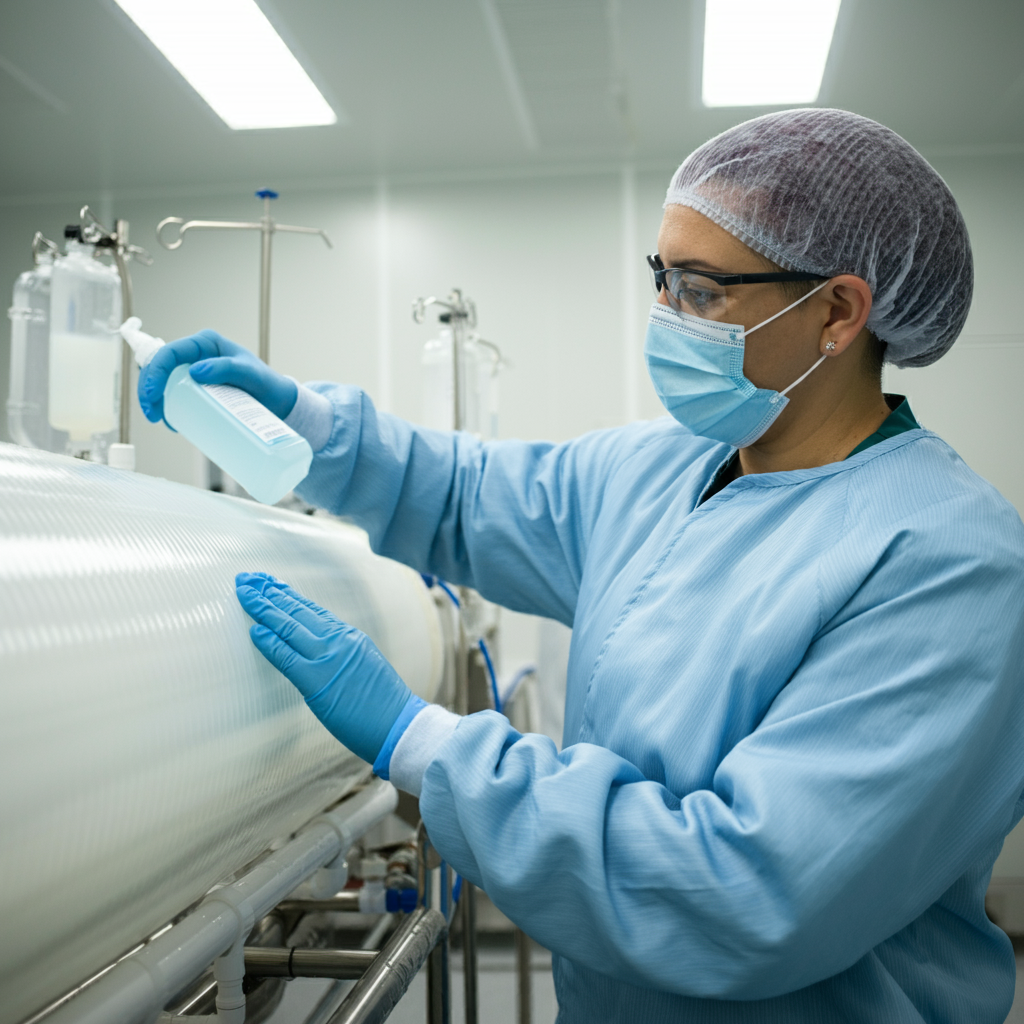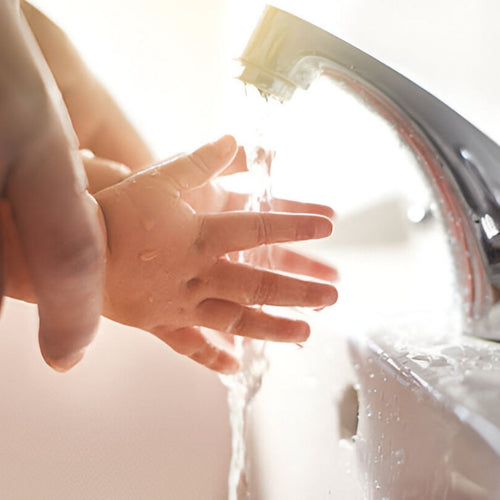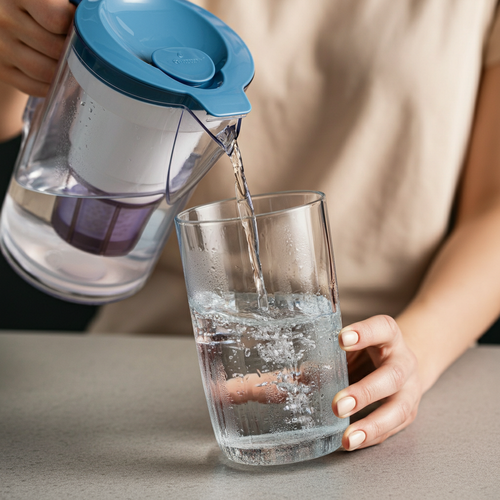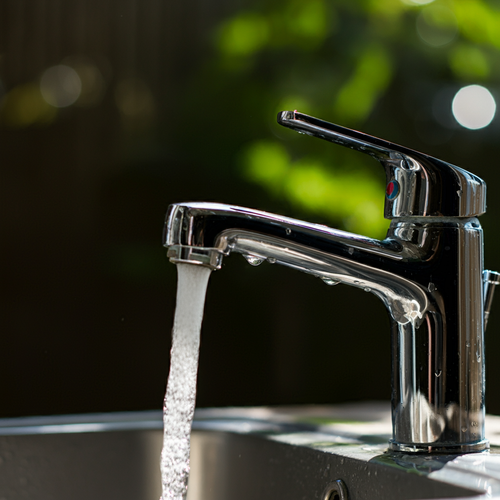The lifespan of a reverse osmosis (RO) membrane typically ranges from 2 to 5 years. However, this is just an average, and several factors can influence the actual lifespan of your membrane. At SoftPro Water Systems, we understand the importance of RO membranes in providing clean, healthy water for your home. Knowing when to replace your membrane is crucial for maintaining optimal water quality and system efficiency.
What is a Reverse Osmosis Membrane?
A reverse osmosis membrane is a semi-permeable membrane that removes impurities from water through pressure. It acts as a barrier, allowing water molecules to pass through while blocking contaminants such as salt, minerals, bacteria, and pesticides. These membranes are often made of a thin-film composite (TFC) material, which consists of a thin layer of polyamide laminated onto a porous support layer. This construction provides high rejection rates for a wide range of impurities.
Unlike other water filtration methods, such as activated carbon filters that primarily remove chlorine and organic compounds, RO membranes are capable of removing a much broader spectrum of contaminants. Imagine a microscopic sieve that allows water molecules to pass through while blocking larger particles and dissolved impurities. This makes RO filtration one of the most effective methods for purifying water for drinking and other household uses.
A Deep Dive into Membrane Types and Technologies
Thin-Film Composite (TFC) Membranes
TFC membranes are the most common type used in residential RO systems. They are constructed with a thin polyamide layer on a porous support, offering high rejection rates for a wide range of contaminants, including salts, minerals, bacteria, and viruses. TFC membranes are known for their efficiency and durability, but they are sensitive to chlorine and require pre-filtration to prevent damage.
Cellulose Triacetate (CTA) Membranes
CTA membranes are made from a cellulose-based material and offer good rejection rates for salts and minerals. They are more resistant to chlorine than TFC membranes, making them suitable for water sources with higher chlorine levels. However, CTA membranes have a lower water flow rate and are more susceptible to bacterial growth, requiring more frequent sanitization.
Cellulose Acetate Blend Membranes
Cellulose acetate blend membranes combine the benefits of TFC and CTA membranes, offering improved chlorine resistance and higher flow rates compared to CTA membranes. They are suitable for a wider range of water sources and provide a good balance between performance and durability.
Nanofiltration (NF) Membranes
NF membranes have slightly larger pore sizes than RO membranes, allowing them to remove a wider range of contaminants, including certain viruses and pesticides, while retaining beneficial minerals like calcium and magnesium. NF membranes are often used in applications where mineral content is desired, such as drinking water and beverage production.
Emerging Membrane Technologies
- Forward Osmosis (FO): FO membranes use a draw solution to extract water across the membrane, requiring less energy than traditional RO. This technology is still under development but shows promise for desalination and wastewater treatment.
- Ceramic Membranes: Ceramic membranes are highly durable and resistant to fouling, offering a longer lifespan than polymeric membranes. They can withstand high temperatures and harsh chemical environments, making them suitable for industrial applications.
Comprehensive Water Quality Analysis
Understanding Water Quality Parameters
The quality of your water supply plays a crucial role in the lifespan and performance of your RO membrane. Various parameters beyond TDS can affect membrane efficiency and longevity:
- pH: The pH level indicates the acidity or alkalinity of water. RO membranes perform optimally within a specific pH range, typically between 6 and 8. Acidic water (low pH) can degrade the membrane material, while alkaline water (high pH) can cause scaling.
- Turbidity: Turbidity refers to the cloudiness of water caused by suspended particles like silt, clay, and organic matter. High turbidity can lead to membrane fouling, reducing its efficiency and lifespan. Effective pre-filtration is essential to remove these particles and protect the membrane.
- Specific Contaminants: Certain contaminants can have a significant impact on RO membrane performance.
- Iron: High iron content can cause staining and fouling of the membrane, reducing its lifespan.
- Manganese: Similar to iron, manganese can also cause staining and fouling, affecting both membrane performance and water quality.
- Hydrogen Sulfide: This gas produces an unpleasant "rotten egg" odor and can damage the membrane material.
Water Testing Recommendations
To ensure optimal RO system performance and membrane longevity, we recommend regular water testing:
- Frequency: Test your water quality at least once a year, or more frequently if you notice changes in water taste, odor, or appearance.
- Testing Options:
- Home Test Kits: These kits provide a basic assessment of water quality parameters, including pH, hardness, and chlorine levels.
- Laboratory Analysis: For a more comprehensive analysis, send a water sample to a certified laboratory. This will provide detailed information on a wider range of contaminants and help you identify potential problems.
Advanced Maintenance and Troubleshooting
Detailed Maintenance Guides
Proper maintenance is crucial for maximizing the lifespan of your RO membrane and ensuring clean, safe drinking water. Here are some essential maintenance tasks:
- Sanitizing the RO System:
- Turn off the water supply to the RO system.
- Depressurize the system by opening the RO faucet.
- Disconnect the RO membrane housing and remove the membrane.
- Prepare a sanitizing solution using a manufacturer-approved product.
- Soak the membrane in the sanitizing solution for the recommended time.
- Rinse the membrane thoroughly with clean water.
- Reinstall the membrane and reconnect the housing.
- Turn on the water supply and flush the system for several minutes.
- Replacing Pre-filters and Post-filters:
- Turn off the water supply to the RO system.
- Depressurize the system by opening the RO faucet.
- Locate the pre-filter and post-filter housings.
- Unscrew the housings and remove the old filters.
- Insert the new filters into the housings, ensuring they are properly seated.
- Screw the housings back on.
- Turn on the water supply and check for leaks.
- Checking for Leaks:
- Visually inspect all connections and tubing for any signs of water leakage.
- Pay close attention to the RO membrane housing, pre-filter housings, and post-filter housings.
- If you detect a leak, tighten the connections or replace any damaged tubing.
Troubleshooting Common Problems
Here's a troubleshooting guide for common RO system issues:
- Low Water Pressure:
- Possible Causes: Clogged pre-filters, clogged RO membrane, low water pressure from the source, or a leak in the system.
- Solutions: Replace pre-filters, clean or replace the RO membrane, increase the source water pressure, or repair any leaks.
- Unusual Noises:
- Possible Causes: Air in the system, a vibrating RO membrane housing, or a malfunctioning pump.
- Solutions: Flush the system to remove air, secure the RO membrane housing, or contact a professional to diagnose and repair the pump.
- Changes in Water Taste or Odor:
- Possible Causes: A failing RO membrane, exhausted post-filter, or bacterial growth in the system.
- Solutions: Replace the RO membrane, replace the post-filter, or sanitize the system.
Data-Driven Insights and Case Studies
Real-World Data on Membrane Lifespan
Research and industry data provide valuable insights into the factors affecting RO membrane lifespan:
- A study published in the journal Desalination found a strong correlation between water hardness and RO membrane scaling. The study showed that membranes operating in hard water conditions experienced a 30% reduction in lifespan compared to those in soft water environments.
- According to data from the Water Quality Association (WQA), RO membranes in homes with high TDS levels (above 500 ppm) typically last 2-3 years, while those in homes with low TDS levels (below 100 ppm) can last 4-5 years or more.
- A report by the American Water Works Association (AWWA) indicated that regular pre-filter replacement can extend RO membrane lifespan by up to 20%.
Case Studies: Extending Membrane Life
- Residential Case Study: A family in Southern California with hard water experienced frequent RO membrane replacements every 18 months. After installing a SoftPro water softener, their membrane lifespan increased to 4 years, demonstrating the significant impact of water softening on membrane longevity.
- Commercial Case Study: A restaurant in Arizona utilizing an RO system for its beverage production faced challenges with high TDS levels and frequent membrane fouling. By implementing a comprehensive pre-treatment system and regular sanitization protocols, they extended their membrane lifespan from 2 years to 3.5 years, resulting in cost savings and improved water quality.
In-Depth Environmental Impact Assessment
Membrane Disposal and Recycling
Improper disposal of RO membranes can contribute to environmental problems. The membranes often contain non-biodegradable materials that can persist in landfills for many years. Additionally, some membranes may contain trace amounts of chemicals that could leach into the surrounding environment.
To minimize the environmental impact, consider these options:
- Manufacturer Recycling Programs: Some manufacturers, such as Filmtec, offer recycling programs for their RO membranes. Contact the manufacturer of your membrane to inquire about their recycling options.
- Waste Management Companies: Several waste management companies specialize in recycling electronic waste and may accept RO membranes for recycling. Check with your local waste management provider for their guidelines.
Sustainable Solutions
The water treatment industry is actively researching and developing more sustainable solutions for RO membrane production and disposal:
- Bio-based Polymers: Researchers are exploring the use of bio-based polymers, derived from renewable resources like corn or sugarcane, to create more eco-friendly membranes. These materials have the potential to reduce reliance on fossil fuels and decrease the environmental impact of membrane production.
- Biodegradable Membranes: Scientists are developing biodegradable membranes that can break down naturally in the environment, reducing plastic waste and pollution.
- Water Reclamation and Reuse: Implementing water reclamation and reuse technologies can help conserve water resources and reduce the overall environmental impact of water purification.
Enhancing Your Home with SoftPro Water Systems
At SoftPro Water Systems, we're passionate about transforming your water and enriching your home. For over several years, we've delivered cutting-edge water softening solutions designed to combat hard water problems, optimize efficiency, and elevate your daily life.
The SoftPro Difference
- Innovative Technology: Our water softeners employ advanced features like upflow regeneration and demand-based operation, minimizing salt and water waste while guaranteeing consistently exceptional softened water.
- Unmatched Efficiency: We believe in creating eco-conscious systems that deliver powerful results. SoftPro water softeners significantly reduce your environmental footprint while lowering your household utility costs.
- Whole-Home Improvement: It's not just about softened water; it's about the difference it makes for your skin, hair, appliances, and plumbing. With SoftPro, you'll experience softer laundry, spot-free dishes, and a revitalized home.
- Personalized Solutions: Our experts understand that no two homes are alike. We help you determine the perfect SoftPro water softener system tailored to your needs and water hardness levels.
- Exceptional Customer Support: From first contact to the longevity of your water softener, we are committed to providing unparalleled customer service. Our team is here to answer questions and ensure complete satisfaction.
Experience the Transformation
With SoftPro, say goodbye to hard water woes. Enjoy softer, healthier water that promotes healthier living and an optimized home environment. We have numerous products such as water softeners, water filters, reverse osmosis water filters, and a lot of water treatment products.
Our website is www.softprowatersystems.com
Ensuring Clean Water with a Long-Lasting RO Membrane
Maintaining the quality and longevity of your reverse osmosis system is vital for accessing clean, safe drinking water at home. By understanding the factors that influence the lifespan of an RO membrane, such as water quality, usage patterns, and diligent maintenance, you can take proactive steps to maximize its effectiveness. Regular monitoring for signs of wear and tear, like decreased water pressure or changes in water taste, allows for timely replacements and prevents disruptions in your water supply.
Choosing a high-quality RO membrane, compatible with your system and certified by reputable organizations like NSF International or the WQA, ensures optimal performance and safety. Investing in a water softener provides an additional layer of protection for your RO membrane, especially in areas with hard water, further extending its lifespan and maintaining peak efficiency.
At SoftPro Water Systems, we are dedicated to providing comprehensive solutions for all your water treatment needs. Our team is here to assist you in selecting the right products and services, ensuring your home has access to clean, healthy water for years to come.


















![Aldex Premium 10% Cross Link Resin for Water Softener [High Capacity]-SoftPro® Water Systems](http://www.softprowatersystems.com/cdn/shop/files/Aldex_10_Cross_Link_Resin_Premium_High_Capacity_for_Water_Softener_600x.jpg?v=1735853599)






















